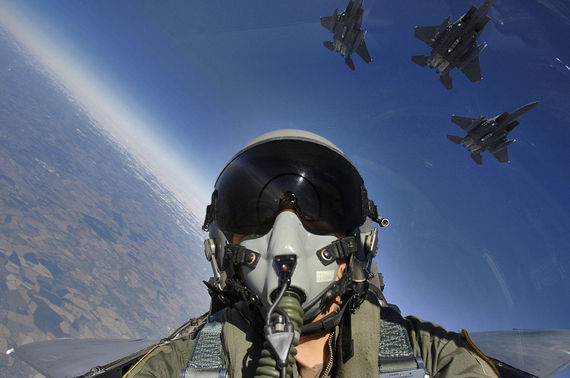Is it getting easier or harder to fly a fighter jet?: originally appeared on Quora: The best answer to any question. Ask a question, get a great answer. Learn from experts and access insider knowledge. You can follow Quora on Twitter, Facebook, and Google+.
Answer by Tim Hibbetts, Naval Aviator, Airline Pilot, Landing Signal Officer
First, from one point of view, it's getting harder to fly fighter jets because there are fewer around and the requirements to even climb in to one are remarkably high. I'm very glad I didn't have this kind of competition for so few slots. Let's move on to the other aspect.
The promise of the computer age used to be that it was going to automate our lives and make things easier and simpler. We were soon disabused of that notion. What they do is make us more productive (and less productive). The effect is similar with modern fighters and their weapons systems. From advanced flight controls that keep the plane in the controllable envelope during the wildest gyrations to sensors that feed from on-board and linked sources, the ability to wreak destruction has never been higher.
- In the F-35, the outside visual sensors and helmet display allow the pilot to look anywhere and not have to have his view blocked by the cockpit; the plane projects an image of the actual outside, with all of the important cuing and flight information overlaid for immediate reference.
This capability requires far more study, though, and not just about the plane. The modern air battle space is rife with other aircraft, designated missile engagement zones, ingress and egress routes, electronic warfare axes and timing, cacophonous radio chatter, tight control schemes, and little to no room for buffoonery. The Special Instructions (SPINS) that go along with every Air Tasking Order, which is how commanders control the air war, are normally over 100 pages of detailed instructions that every air crew needs to know before flying in an operation or theater. Daily SPINS are additional notes that highlight changes and are usually in excess of 20 pages. Along with your airplane, you need to be able to execute the air plan without deviation.
The airplanes themselves are getting easier to fly. The temperate, fatherly control computers and giddy-co-ed responsiveness make them incredibly fun to whip around when you have nothing pressing going on. But if you can't employ it as a weapon system, you're worse than useless. You need to be able to leap into a nest of rabid badgers and do surgery with a chain saw, reciting Shakespeare in the original Klingon.


